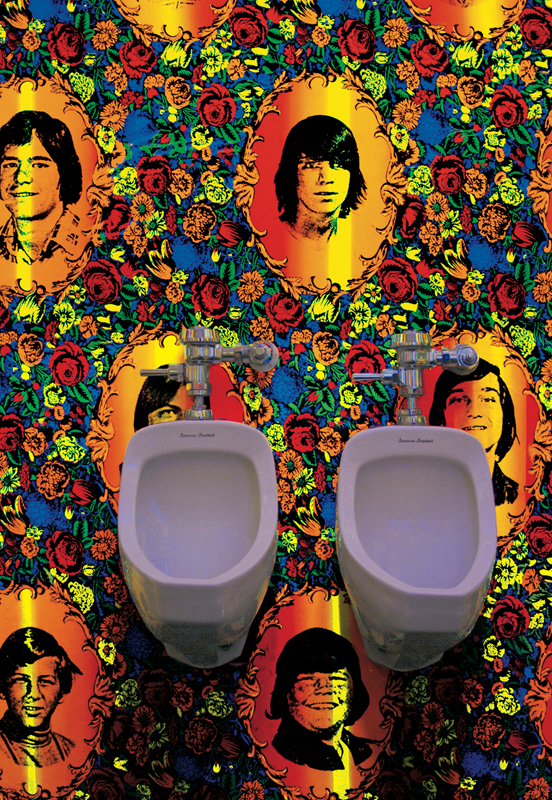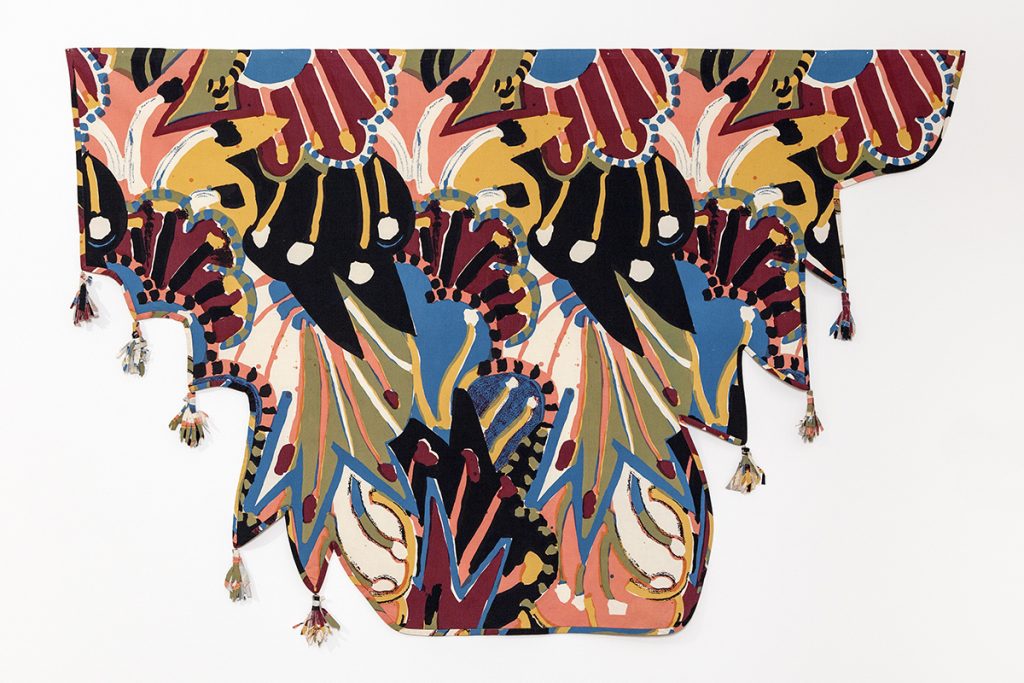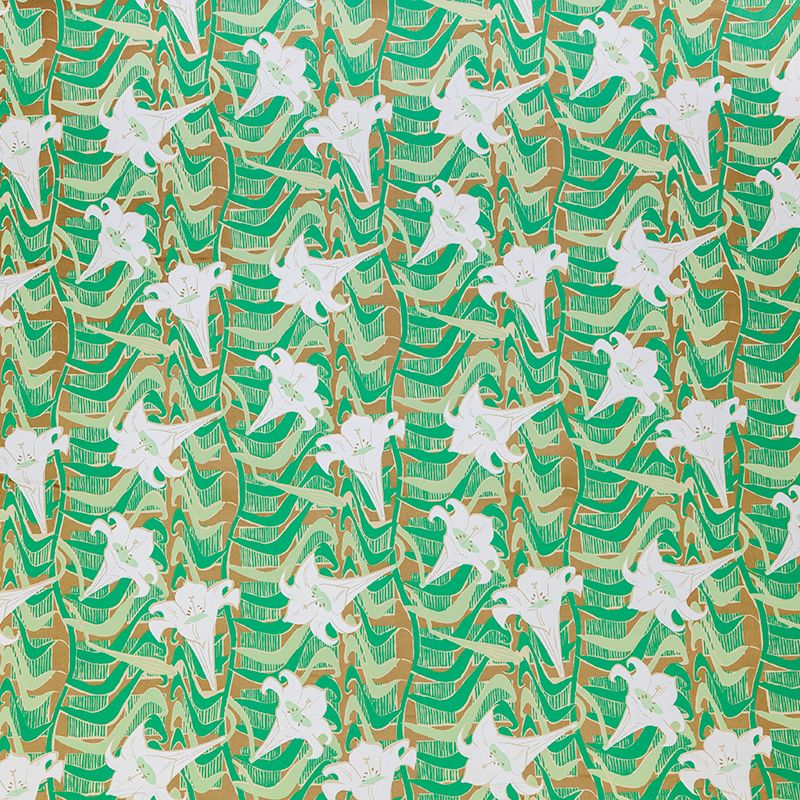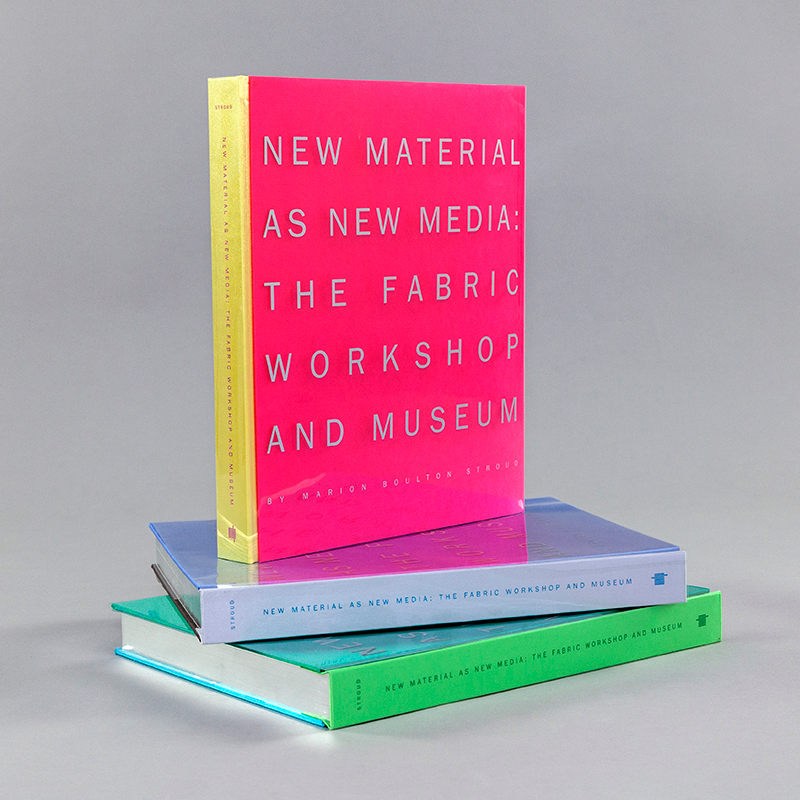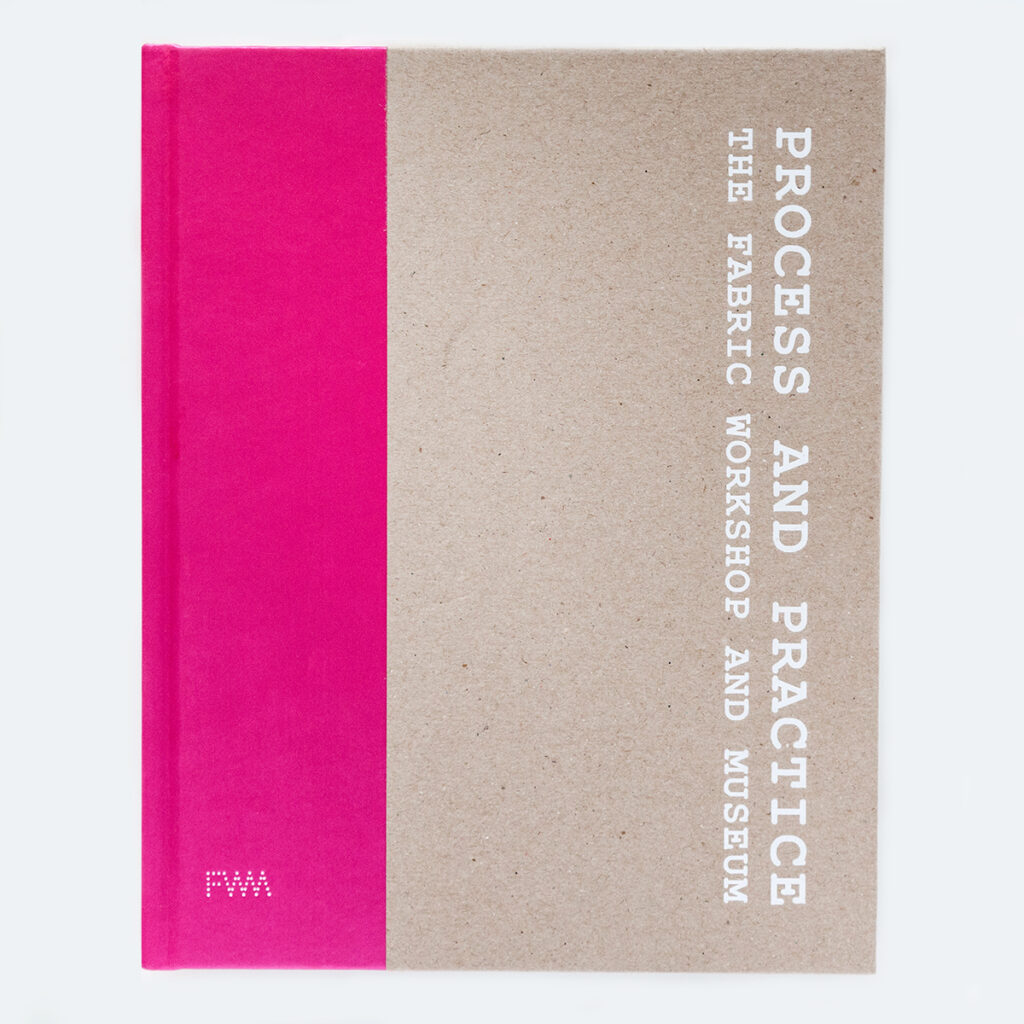Virgil Marti’s installations use elements that blur the line between high culture and interior decoration, inviting the viewer to consider whether to regard a chandelier, a sofa, or a wallpaper as a fine art object rather than an element of interior design and to question whether a distinction is even necessary. He is interested in the tradition of the Merton Abbey textile atelier that William Morris established with his Pre-Raphaelite colleagues in 1881, one of Marion Boulton Stroud’s inspirations when she founded FWM; but he also expands further upon these influences, injecting them with cheeky flourishes and pop-culture allusions.
Marti, a former Master Printer at FWM, has developed several transformative screen-printed projects with FWM over the years. Marti created For Oscar Wilde as a site-specific installation in and around a prison cell in Philadelphia’s now-abandoned Eastern State Penitentiary (Prison Sentences: The Prison as Site/The Prison As Subject, organized by Julie Courtney and Todd Gilens). Taking Oscar Wilde’s imprisonment in 19th century England as his cue, Marti borrowed from the William Morris-inspired design of Wilde’s day and fashioned an aesthetically pleasing cell, one that the playwright himself might have found bearable during his own confinement.
The piece progresses from the natural to the artificial, with beauty as one of its central themes—an idea with heightened poignancy considering the decay and desolation of the once-formidable stone prison. An outdoor garden bed of radiant sunflowers marks the entry into the prison itself, while a meandering path made from a border of silk lilies in full bloom leads to the door way of the cell. Once inside, the cell itself contains a single bed—a ribbed iron frame made slightly more enticing by its pure white velveteen slipcover—and the walls are covered with silkscreen printed wallpaper of the artist’s design, sunflowers above, lilies below. A band of scripted text of Wilde’s writings divides the Arts and Crafts floral patterns.
For Oscar Wilde is an homage to Wilde, but it also offers commentary on the terrible irony of his life as a champion of art and beauty over conventional morality. During his final years, Wilde found himself imprisoned for what was deemed a lack of morality, as his homosexuality was viewed at that time.
For his 2009 exhibition, he produced a wallpaper with a visual motif based on a digitally manipulated photograph of Elvis Presley’s gravesite memorial at Graceland, in Memphis, Tennessee, which employs the textured flocking also used in his well-known Bullies wallpaper. This exhibition included a second new wallpaper, with a repeat of luxurious white-on-white fabric swag, creating a trompe l’oeil appearance of the gallery draped with cloth. Marti populated the gallery with his furniture “pouf” ottomans, circular settees stretched with boldly patterned fabric, and his series of sculptures made with fiberglass castings of human bones. These bone sculptures juxtapose the light playfulness of the forms they imitate—such as a flower or a snowflake—with the somber tone of a medieval memento mori against vanity, capping the installation with a paradoxical balance of beauty, irreverence, and gravity.
